Menu
Physics Lesson 4.3.2 - Factors Affecting Resistive Forces
Please provide a rating, it takes seconds and helps us to keep this resource free for all to use
Welcome to our Physics lesson on Factors Affecting Resistive Forces, this is the second lesson of our suite of physics lessons covering the topic of Types of Forces II. Resistive Forces (Frictional Force. Drag). Terminal Velocity, you can find links to the other lessons within this tutorial and access additional physics learning resources below this lesson.
Factors Affecting Resistive Forces
Let's start with the frictional force. When the surfaces in contact are smooth, the object slides easier and therefore, it goes farther. On the other hand, it is very difficult to make an object slide on a rough surface. This mean the smoothness or roughness of surfaces in contact is an important factor that affects the motion.
Mathematically, this factor is represented through the friction coefficient, μ. This is a dimensionless constant that varies between 0 and 1. Thus, if μ = 0, this means there is no friction produced (the surfaces are ideally smooth). On the other hand, when μ = 1, the surfaces in contact are the roughest possible. If we enlarge the view of the abovementioned rough surfaces, they will look like in the figure.
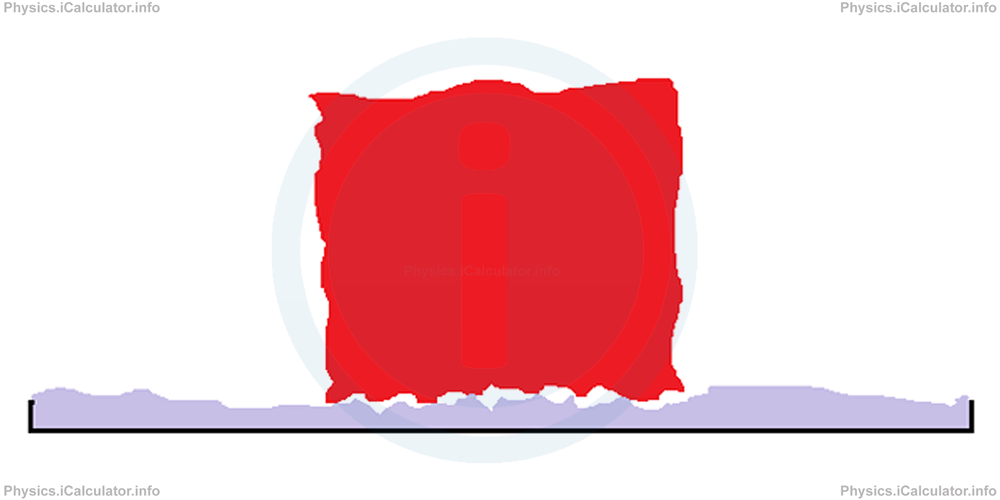
It is obvious that it is very difficult to move horizontally the object in the figure as the gaps in the irregular surfaces in contact hamper the sliding process.
Machinery constructors use to lubricate with oil the parts that are more exposed to friction. Lubrication reduces the friction as the liquid fills the gaps on rough surfaces. Therefore, these gaps become less evident.
Another factor affecting the friction is the weight of the object. Thus, heavier the object, more it presses the ground and therefore it becomes more difficult to move it horizontally. Suppose there is a sheet of paper on a table. It is very easy to pull it horizontally along the table. But if you put your hand above the sheet, it becomes more difficult to pull the sheet horizontally as you are exerting an extra downward force on it.
Since when dealing with the frictional force we are interested in the friction caused by the environment to the object, we replace the weight with its counterpart, i.e. the normal force N⃗ exerted by the ground on the object. It has the same magnitude as the weight but opposite direction.
Summarizing the above factors and expressing the result mathematically, we obtain the equation below for the magnitude of frictional force f⃗:
= μ × |W⃗|
= μ × |m × g⃗ × cos θ|
The angle θ is relevant only when the object is on an inclined plane (slope). When the object slides along a horizontal plane, the angle θ to the horizontal direction is equal to zero. Therefore, cos 00 = 1 and therefore this part can be removed from the formula.
On the other hand, when we press an object from above and then we try to slide it along the surface, we have an extra force to add in the calculation of Normal Force N. Let's explain all the abovementioned things through an example.
Example 1
A 8 kg object rests on a horizontal surface as shown in the figure.
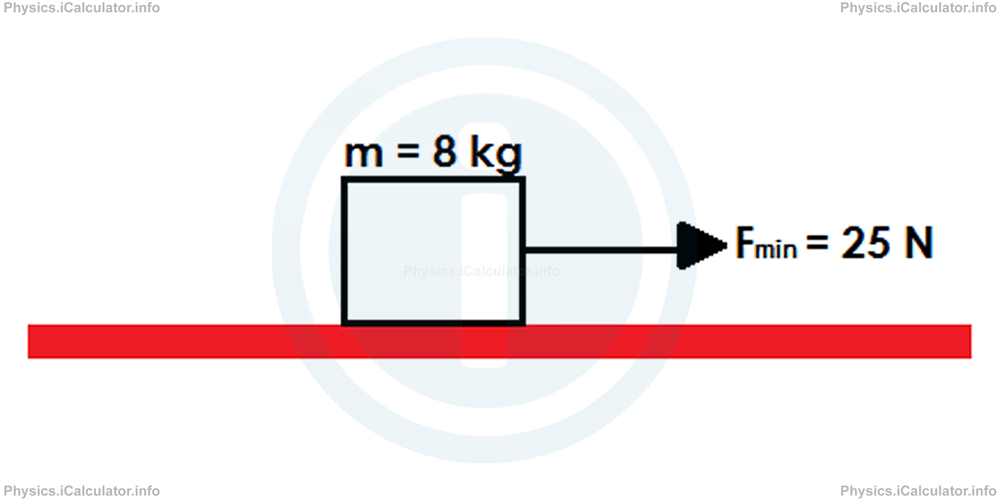
What is the friction coefficient between the object and the horizontal plane if the minimum horizontal force needed to make the object move is 25 N?
Solution 1a
Since the minimum force to make the object move is 25N, this value also represents the frictional force to be surpassed. Therefore, we have: f⃗ = 25 N. Look at the figure.
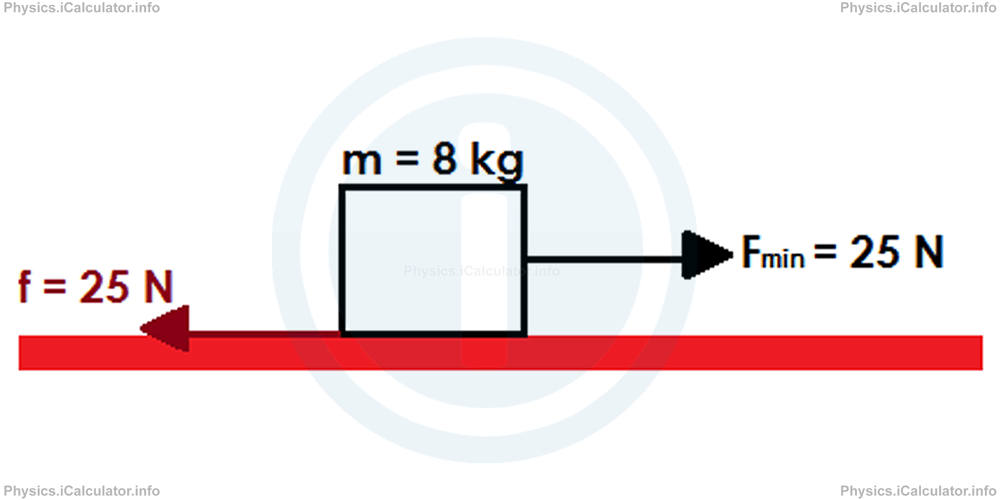
On the other hand, since the plane is horizontal, we have θ = 0° so cos θ = cos 0° = 1.
Hence, we have
Thus,
An additional 20 N force is exerted vertically down on the object as shown in the figure.
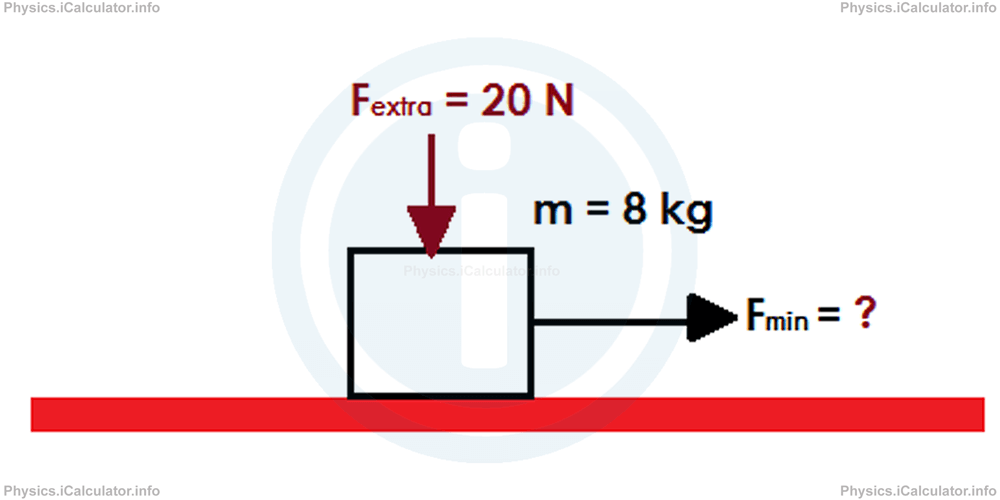
What is the minimum horizontal force needed now to make the object move?
Solution 1b
The additional force is added to the gravitational force as both act vertically down. The resultant gives the weight. We will use the magnitude of this new weight to find the frictional force because (as stated earlier) weight is numerically equal to the normal force N.
We have:
= μ × (m × g⃗ + F⃗extra )
= 0.32 × (8 × 9.81 + 20)
= 31.5 N
The minimum force used to make the object move must be at least equal to the frictional force. Therefore, we have for the magnitude of the new minimum force:
If the same surface and object are placed on a 150 slope as shown in the figure, what is the minimum pulling force to make the object slide downhill? Take cos 150 = 0.966 and sin 150 = 0.259.
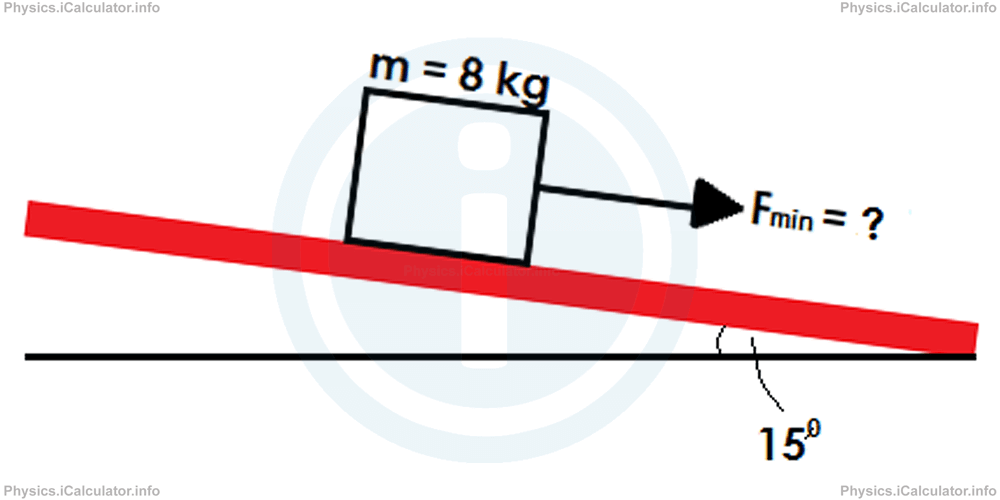
Solution 1c
Now, we must consider the angle θ in the calculation of the frictional force. We have
= 0.32 × 8 × 9.81 × 0.966
= 24.26 N
Remark! Frictional force does not depend on the size of the areas in contact. Indeed, no area exist in the formula of frictional force.
As for the drag, one of the factors affecting it, is the density of fluid in which the object is moving. Denser the fluid, harder the motion through it.
Another factor (unlike in the frictional force) affecting the drag's value is the surface of contact. This means sharper the object moving through a fluid, easier its motion. This is the reason why car designers pay particular attention to the aerodynamic form of the car. When the aerodynamic form is perfect, the car moves easier through the air and as a result, it saves fuel. Look at the figure below:
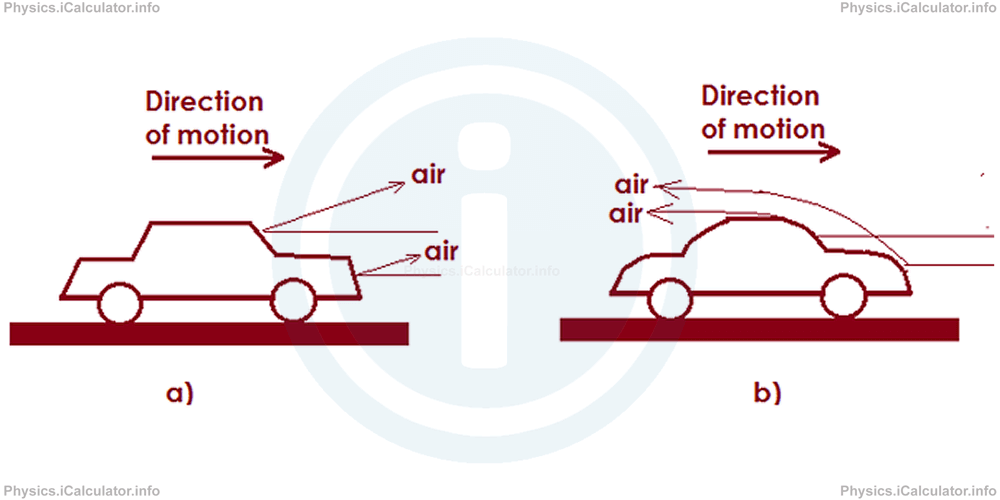
In the first figure, the air turns back due to the snaggy shape of the car. As a result, a region with denser air is created in front of the car, which makes its motion more difficult. On the other hand, in the second figure most of the air slides aside or above the car. As a result, the car moves easier and faster.
The formula of drag includes many other elements besides the ones mentioned above such as coefficient of viscosity, Stock's force etc. Therefore, we have not considered as appropriate to show it here, as this goes beyond the scope of this course.
You have reached the end of Physics lesson 4.3.2 Factors Affecting Resistive Forces. There are 3 lessons in this physics tutorial covering Types of Forces II. Resistive Forces (Frictional Force. Drag). Terminal Velocity, you can access all the lessons from this tutorial below.
More Types of Forces II. Resistive Forces (Frictional Force. Drag). Terminal Velocity Lessons and Learning Resources
Whats next?
Enjoy the "Factors Affecting Resistive Forces" physics lesson? People who liked the "Types of Forces II. Resistive Forces (Frictional Force. Drag). Terminal Velocity lesson found the following resources useful:
- Factors Feedback. Helps other - Leave a rating for this factors (see below)
- Dynamics Physics tutorial: Types of Forces II. Resistive Forces (Frictional Force. Drag). Terminal Velocity. Read the Types of Forces II. Resistive Forces (Frictional Force. Drag). Terminal Velocity physics tutorial and build your physics knowledge of Dynamics
- Dynamics Revision Notes: Types of Forces II. Resistive Forces (Frictional Force. Drag). Terminal Velocity. Print the notes so you can revise the key points covered in the physics tutorial for Types of Forces II. Resistive Forces (Frictional Force. Drag). Terminal Velocity
- Dynamics Practice Questions: Types of Forces II. Resistive Forces (Frictional Force. Drag). Terminal Velocity. Test and improve your knowledge of Types of Forces II. Resistive Forces (Frictional Force. Drag). Terminal Velocity with example questins and answers
- Check your calculations for Dynamics questions with our excellent Dynamics calculators which contain full equations and calculations clearly displayed line by line. See the Dynamics Calculators by iCalculator™ below.
- Continuing learning dynamics - read our next physics tutorial: Types of Forces III (Elastic Force and Tension)
Help others Learning Physics just like you
Please provide a rating, it takes seconds and helps us to keep this resource free for all to use
We hope you found this Physics lesson "Types of Forces II. Resistive Forces (Frictional Force. Drag). Terminal Velocity" useful. If you did it would be great if you could spare the time to rate this physics lesson (simply click on the number of stars that match your assessment of this physics learning aide) and/or share on social media, this helps us identify popular tutorials and calculators and expand our free learning resources to support our users around the world have free access to expand their knowledge of physics and other disciplines.